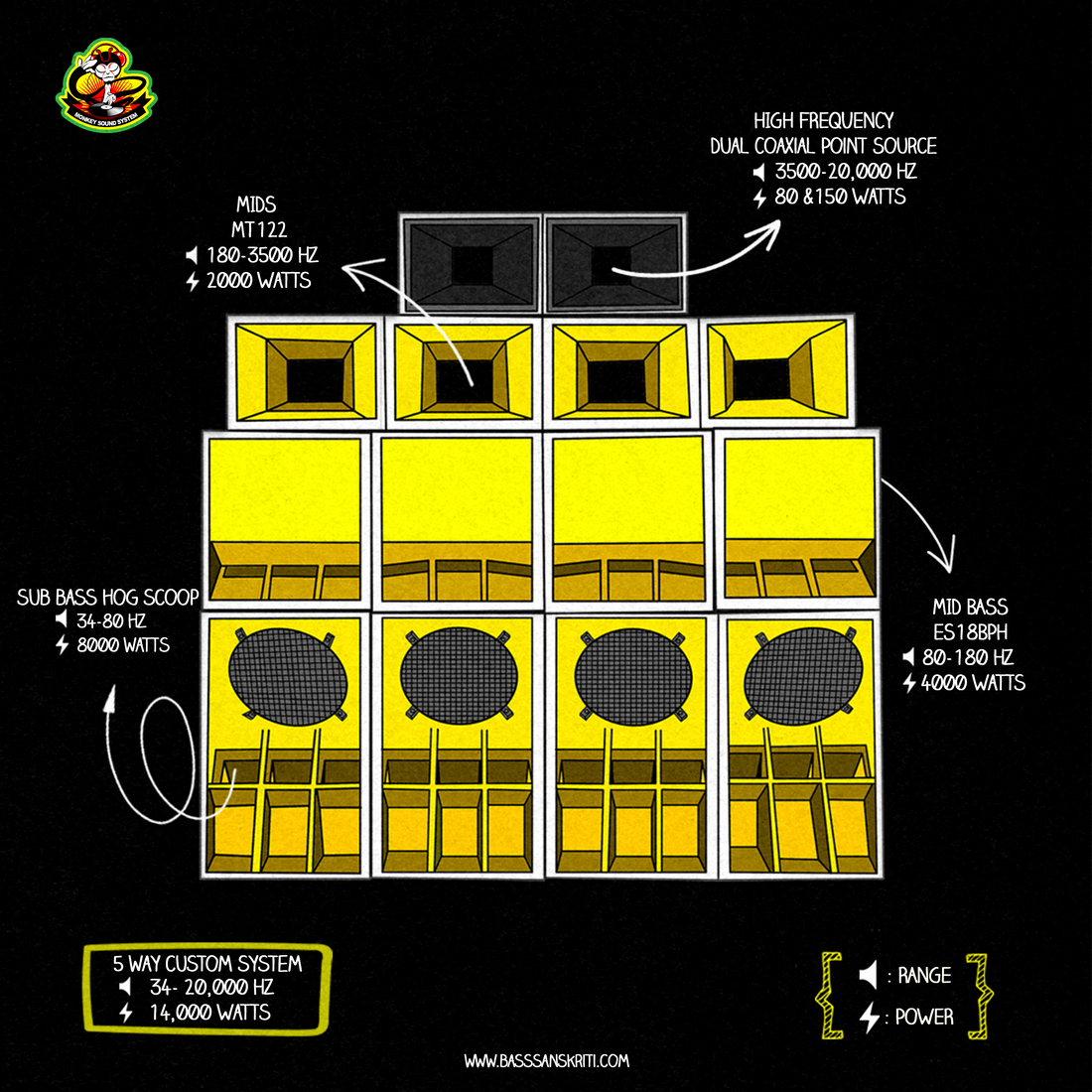In Jamaican reggae subculture, the term “sound system” refers to a set of sound amplification systems, speaker boxes specially designed according to the taste and style of the soundman or soundwomen, that have been culturally appropriated and are used to dominate the soundscape of a given area and uplift a target market.
Sound systems are “self-generated institutions of studying,” and soundmen and soundwomen are nonformal and informal educators of the way of life.
“Each one, teach one” is a phrase frequently heard in reggae sound system sessions. Now and then, the learning makes a specialty of technical topics, like the use of cables to link the numerous connections in the system or the way to electricity up the equipment and operate the turntables, the mixer, and the hand-crafted pre-amplifier that feeds amplifiers, all of which are linked to a line of speakers, drivers for the sub-bass, mid bass, mid high frequencies, and tweeters. At other times, the study is focused on cultural understanding, like how to pick the fine tunes, a complex process that calls for deep information about the records of reggae tunes and their artists, sound engineers, lables, and others.
Still, other forms of mastery are aimed at cultural practices. By watching and listening to skilled MCs, the aspirational MC can learn a lot about how to say the right phrases at the right time to encourage or manipulate a target market. Understanding how those differing kinds of gaining knowledge take place can provide powerful insights into a sound machine lifestyle.
Fundamentally, a sound system refers to a personalised compilation of equipment to integrate across the range of frequencies to generate particular sonic features. To initiate this process, it is vitally important to define the composition of various components present in speaker stacks. Below are some crucial pointers.
Speaker drivers come in different types such as subbass, bass, mid range and tweeter. The bass drivers solely produce lower notes whereas sub bass go even deeper producing ultra-low bass also known as "subs. There are various designs of speaker cabinets created for specific speaker drivers.
In a sound system, speakers are categorised by their frequency range - Subbass, Bass, Mid, and Top. Each speaker is designed to handle specific bands of sound with "Top" being the high-frequency end. To accommodate varying ranges of audio, different sizes of specialised speakers are used.
The speaker cabinet is a container that encloses the driver. A driver in a speaker refers to the cone or bowl-shaped diaphragms responsible for converting electrical signals into audible sounds. These components physically move back and forth when playing high-volume sounds, generating air pressure that produces sound waves.
A crossover, or "x-over", is an electrical circuit that sorts sound components to specific speakers and eliminates selected frequencies. The cutoff point for the filter is known as the crossover frequency. This method directs bass sounds to large woofers while sending high-frequency tones to smaller tweeters to obtain a clear and accurate audio output free of distortion. Depending on the intended use case, crossovers can include passive circuits or active circuits.
For the Monkey Sound System the speaker cabinets and drivers are very thoughtfully chosen. For example, Hog Scoop cabinets are used with Void V-18 1000 drivers as the response of the speaker to the driver is in equation.
Similarly, for Bass, the chosen cabinet is ES18BPH, which requires 18 inch drivers unlike 15 inch drivers in other combinations. The choice of 18 inch cabinet to compliment the subs is a personal choice to bring the punchy kick to go along with the deep low sub bass.
For Mid range, the most popular combination is MT122, which is a horn loaded cabinet to make the mid range go 180 degrees. A fine 12 inch speaker cabinet is most suitable for this.
For the tweeters, a simple box with BMS 4590, which is a point source coaxial driver is a combination to keep the full range spectrum to compliment the whole frequency range.
Credits:
Graphic: Suhaas Chitturi & Gayatri Rana

